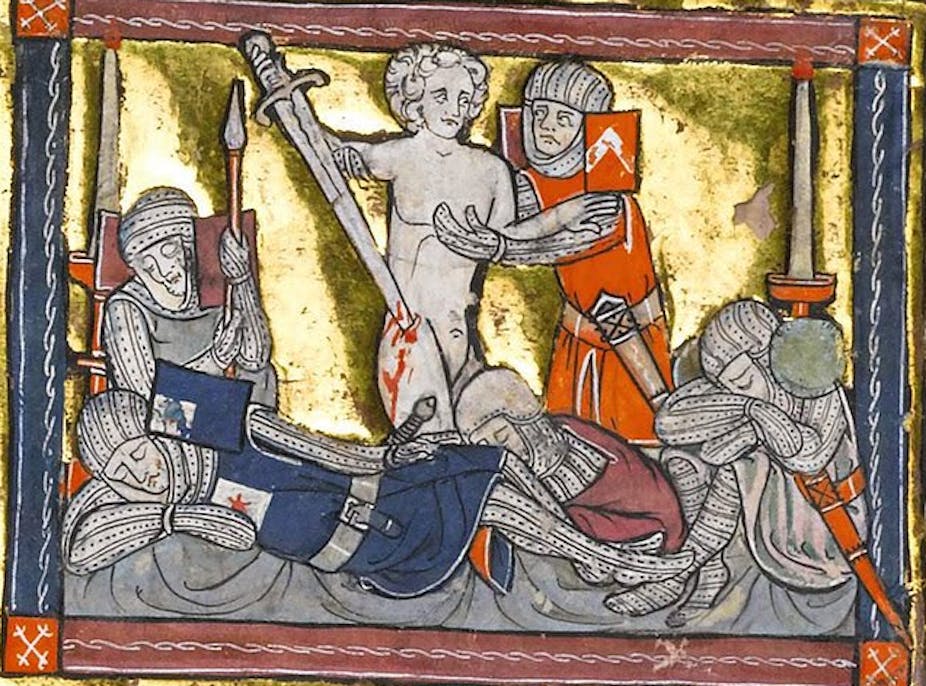How do we feel about death, suffering, and struggle, and how do we react to those around us as they deal with these issues?
These questions shape and are shaped by society. They guide individual choices, communities, and national and international policies. Emotions are so integral to these questions that we rarely pause to tease them out and find out how and why they work. But emotions are key.
I am a postdoctoral researcher for the Australian Research Council’s Centre of Excellence for the History of Emotions (Europe 1100-1800), or CHE. My project, carried out with CHE Chief Investigator Dr Juanita Ruys, considers emotions related to suicide in medieval Europe.
It is one of dozens of research projects funded through the CHE that asks how emotions were formulated, how they operated in the past, and how they have shaped the present.
ARC-funded research from our centre was deemed by the Coalition to be of “limited value” this week – the kind of research that in a tight fiscal environment should have its funding pulled.
But this view is shortsighted and superficial, and here’s why.
Though I research people who killed themselves hundreds of years ago, there are continuities in the ways that humans deal with struggle and change.
A person who drowns him or herself after suffering from disease, isolated at home and delirious with pain, a widow who hangs herself in her bakery after working to support herself and her children, a suspected criminal who kills himself in fear that he will be shackled with torture, imprisonment, and shame: these scenarios are lifted directly from medieval coroners’ rolls, but they could equally be used to explain suicide today.
How were people’s emotions in the past understood to lead to these self-destructive situations, and how did family, community, and the state respond to their suicides? Though the cultural settings, geography, and time period are different, we are asking the same questions now in Australia.
One in three Australians participated in R U OK? Day on September 13th this year according to R U OK’s scientific advisory group.
This event and other organisations such as Lifeline, Beyond Blue, Headspace, and ReachOut.com are working to ensure that Australians check in on each other and themselves. They provide services that help people to cope with and overcome depression, bullying, the oppression of chronic sickness or ill mental health, and other factors that can trigger suicide.
My research project on emotions related to suicide in medieval Europe is historical, but it has impact on Australia today. If hearing about this project causes one person to reassess their suicidal thoughts, or prompts someone to ask a loved one or colleague how they are doing, if it piques the interest of policy makers and furthers the work of those in organisations who help suicidal people, then it has done something incredible.
The advancement of the humanities is my academic goal. I also talk about suicide in the public sphere, liaise with medical practitioners and counsellors, and reach out to those who need us to recognise and help them before it’s too late. These things transcend the traditional view of what humanities scholarship does, yet they are part of my project.
Research in the history of emotions necessarily involves the big issues, and the CHE is committed to publicising this groundbreaking historical research and showing how it is relevant to Australia today.
Through this project and others, the CHE is helping to articulate how Australian universities are relevant beyond the walls of their sandstone quadrangles. This is the cutting edge of the academy.
Devoting Australian Research Council funding to create jobs in the intellectual culture of this country and further high quality research — while addressing the significant issues of modern society — is something that the government and the people of Australia should not only support, but of which they should be exceptionally proud.

